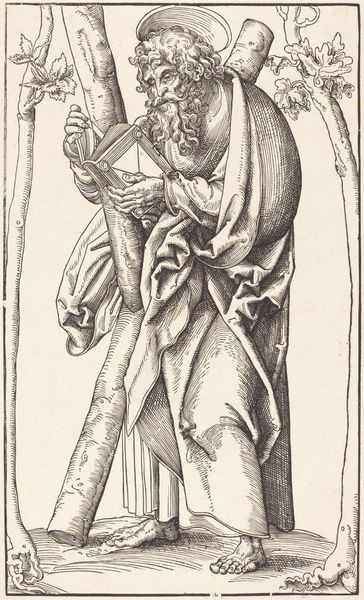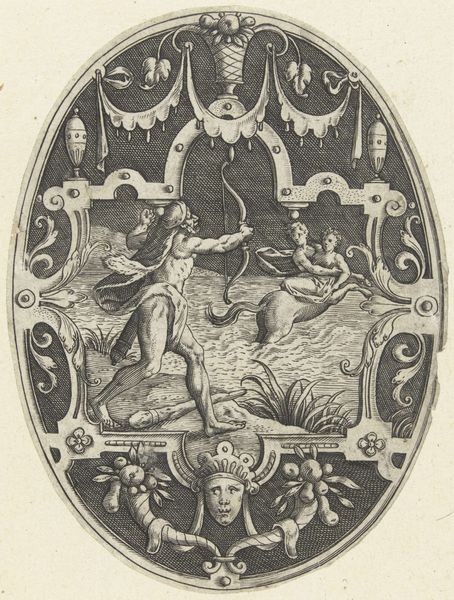
print, engraving
#
portrait
#
natural shape and form
# print
#
figuration
#
form
#
11_renaissance
#
line
#
northern-renaissance
#
decorative-art
#
engraving
Dimensions: height 131 mm, width 27 mm, width 16 mm
Copyright: Rijks Museum: Open Domain
Editor: This is "Sheets with Judith," an engraving by Monogrammist HE from 1529. The detail is incredible, especially for an engraving. I'm immediately drawn to the somewhat decorative, elongated format, and then Judith herself holding a head. What stands out to you? Curator: I notice how this print engages with the growing popularity of biblical heroines in Renaissance art. Think about the role imagery played then; Judith, a woman who saved her people through decisive action, became a potent symbol. Given that the print was made in 1529, not long after the start of the reformation, its production during a period of religious upheaval is worth consideration, wouldn’t you say? Editor: Absolutely. So, beyond the purely decorative, are you suggesting this print possibly served as some form of...proto-propaganda, maybe offering a veiled commentary on religious power? Curator: Exactly. Consider the act of disseminating such imagery via prints, making it accessible beyond the elite. How do you think its message might have resonated within different social strata? Would a wealthy patron perceive it differently than, say, an artisan or merchant? Editor: That's a great point. For a wealthy patron, it could be an exotic story. But if it's widely disseminated, the message gets trickier, right? Is it empowerment, warning against tyranny, or even… an endorsement of forceful actions against opposition, re-framing biblical text with new social implication? It has very distinct weight and meaning now. Curator: Precisely! Understanding the politics of imagery is key. This is less about Judith herself and more about what her image *does* within its specific cultural moment. Thinking about the social implications certainly enrich the way that the piece engages modern viewers. Editor: This has broadened my perspective, from admiring the surface aesthetic to considering its cultural and political layers! I didn't consider what its initial circulation actually signified. Thanks.
Comments
No comments
Be the first to comment and join the conversation on the ultimate creative platform.













